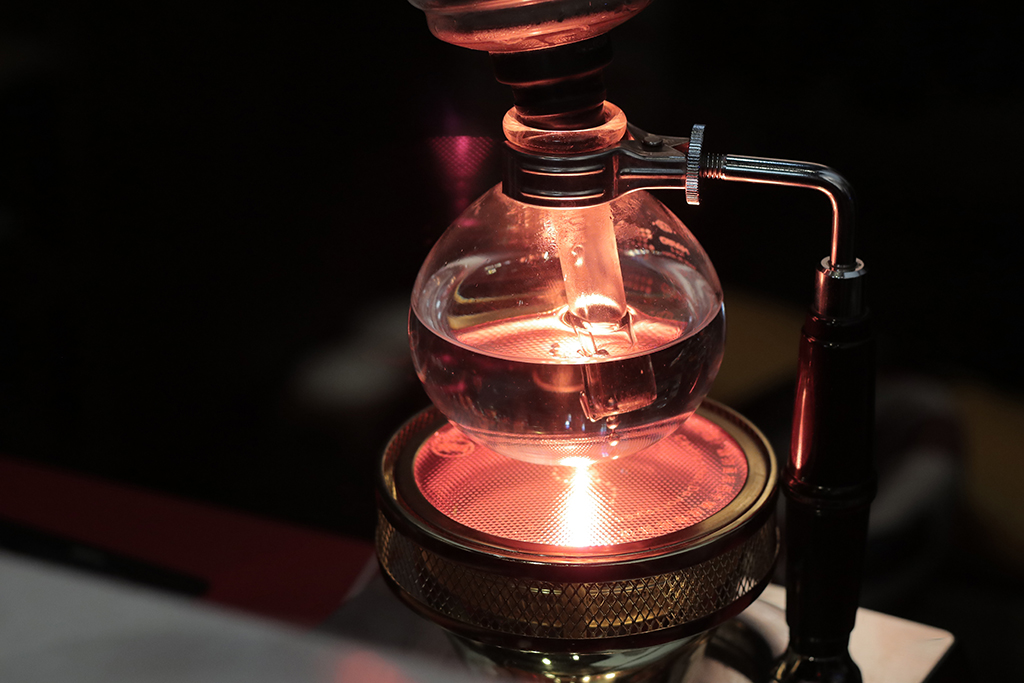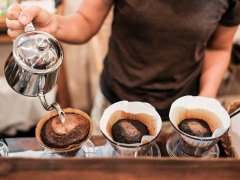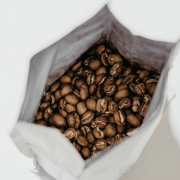Of the six common ways to brew coffee in coffee shops, which one tastes best?
Professional coffee knowledge exchange more coffee bean information please follow the coffee workshop (Wechat official account cafe_style)
There are many ways to brew coffee all over the world, and the details of each way vary according to the conditions set by baristas. Today, the editor will introduce several kinds of bubbling methods that we may encounter in the future. First, understand the difference between the flavor and smell that each brewing method brings to the coffee. Today, we will not elaborate on the steps and methods of coffee brewing, but rather to understand the characteristics of the coffee brewed by various utensils and products, and to be able to correctly find out which appliances you can use at various stages of learning coffee or at home.
One: siphon pot of coffee
The first way to soak, I believe that many friends who are obsessed with coffee must have this set of simple and elegant utensils at home.

Siphon bubbles mainly need to observe the temperature of the water, the number of stirring times, the characteristics of the coffee brewed, the color will also be more muddy, the taste is thicker, and the sense of grease is higher, because it is soaked in a high temperature environment. so there are not many levels of flavor, more single concentration, you should also pay attention to the problem of extraction.
After the bubble is over, the natural and complete hill of the coffee powder is a symbol of the baristas' technical proficiency, indicating that the coffee powder is stirred evenly and steadily in the process of soaking. However, the presence of hills does not necessarily mean that coffee is good, and siphon pot coffee without hills is not necessarily bad. There are many influencing factors in coffee brewing, so we must not be too obsessed with one of them.
Two: Turkish coffee
The second kind of bubble is actually quite rare at home, but it has begun to recover abroad. Turkish coffee is a kind of coffee utensils that many girls fall in love with. In fact, there are allusions. I heard that every Turkish girl has to learn to make this kind of coffee. when someone comes to propose, the girl can add sugar to the coffee if she likes it (the more she likes, the more she likes her). On the contrary, the man will drink bitter coffee if she doesn't like it. this is actually a way of euphemism without breaking etiquette.
The most amazing thing about Turkish coffee is that its taste is cooked at high temperature and unfiltered, so the flavor of beans can be seen clearly in it, full of thick nuts and coffee chocolate. it will make people take one mouthful after another (of course, it has a lot to do with beans, Turkish coffee usually uses Brazilian coffee beans, also because of this flavor).
In addition, some Turkish baristas can use it for fortune telling, mainly using leftover coffee grounds to judge the future direction and fortune of tasters.
Three: hand-held coffee
The third most common coffee brew is the most familiar hand-held coffee! Single-product coffee beans are usually used for soaking, the taste buds are rich in layers, the aroma is as layered as flowers, and the color is relatively clear and clean, so it is a coffee utensil that many families who love coffee must have.
The most interesting thing about drinking coffee is that hand-brewing devices are not as difficult to obtain as other brewing methods. From coffee pots to filter cups, there are different choices every time, and the coffee brewed is always different. If you like friends who are so changeable and afraid of trouble, let's start here!
Four: cold extract coffee
The fourth method is the recently popular coffee brewing method, which is super suitable for muggy seasons and lazy people who don't have time to use it. Because you don't need to spend too much skill on it, as long as you choose the right beans and are willing to exchange time (after all, it takes at least 12 hours to drink), much like the concept of cold tea soaking in Taiwan.
Cold extraction coffee uses the same basic powder-to-water ratio, and cold extraction, as the name implies, uses cold water to extract coffee essence, of course, you need to give it enough time. After we pour the cold water into the refrigerator as soon as possible, the coffee at room temperature is just as easy to go bad or bad.
The best thing about cold coffee is that it can usually be placed in the refrigerator for a week or so (depending on the person), isn't it convenient?
Five: espresso
The fifth way to brew coffee is espresso, a large machine that usually appears only in coffee shops or on special occasions, but there are also many small household coffee machines on the market. it is suitable for you who like to drink sweets or add dairy products and are new to coffee.
The steps are roughly filled with powder, whole powder, flattening, extraction and flower drawing.
Everyone must be very clear about the taste, but there is a little knowledge that basically Italian coffee has more than 2-3 kinds of mixed beans to make the coffee have multiple levels of flavor, otherwise dairy products will become tasteless very often. It's definitely not because of flavors and other additives.
Six: ice drop coffee
The last way to brew coffee is ice drop coffee, which is also a long-awaited drink. Mainly for the relationship of cold (ice) water extraction for a long time, the taste is more pure and bright, and the flavor is also quite rich. Different from other brewing methods, ice drop coffee itself has a strong fermentation flavor after extraction (at least 6-8 hours). If you are not used to drinking coffee first try ice drop coffee, give you a completely different flavor from hot coffee!
Maybe some people will look at this and think, won't the cold coffee be kept for longer? But this one is actually different! Ice drop coffee still has the concept of hand coffee in some aspects, such as filtering the way to extract coffee, so the coffee is more full-bodied, each drop is the essence of the essence.
So this is the end of today's introduction, interested friends remember to continue to follow our coffee workshop, watch more coffee knowledge!
END
Important Notice :
前街咖啡 FrontStreet Coffee has moved to new addredd:
FrontStreet Coffee Address: 315,Donghua East Road,GuangZhou
Tel:020 38364473
- Prev

What is the difference in flavor between light-roasted and deep-roasted coffee beans? Understand the basic concepts in 2 pictures
Professional coffee knowledge exchange more information about coffee beans Please follow the coffee workshop (Wechat official account cafe_style) coffee beans will change in different roasting stages. After the raw coffee beans absorb heat, the color changes from green to yellow, and the moisture content of beans begins to decrease. Heat converts the water inside the coffee bean into steam, which produces carbon dioxide inside the coffee bean, and the internal pressure of the coffee bean reaches 2.
- Next

The purpose of coffee roasting: what's the difference between the roasting competition and the coffee beans sold in the store?
Professional coffee knowledge exchange more coffee bean information please follow the coffee workshop (Wechat official account cafe_style) good morning, the coffee shop management is still quite good! Since you started baking and selling coffee yourself, have you received responses from guests and questions about your baking during this period of time? Will the guests like this kind of baking? If it shows on the curve
Related
- Beginners will see the "Coffee pull flower" guide!
- What is the difference between ice blog purified milk and ordinary milk coffee?
- Why is the Philippines the largest producer of crops in Liberia?
- For coffee extraction, should the fine powder be retained?
- How does extracted espresso fill pressed powder? How much strength does it take to press the powder?
- How to make jasmine cold extract coffee? Is the jasmine + latte good?
- Will this little toy really make the coffee taste better? How does Lily Drip affect coffee extraction?
- Will the action of slapping the filter cup also affect coffee extraction?
- What's the difference between powder-to-water ratio and powder-to-liquid ratio?
- What is the Ethiopian local species? What does it have to do with Heirloom native species?

